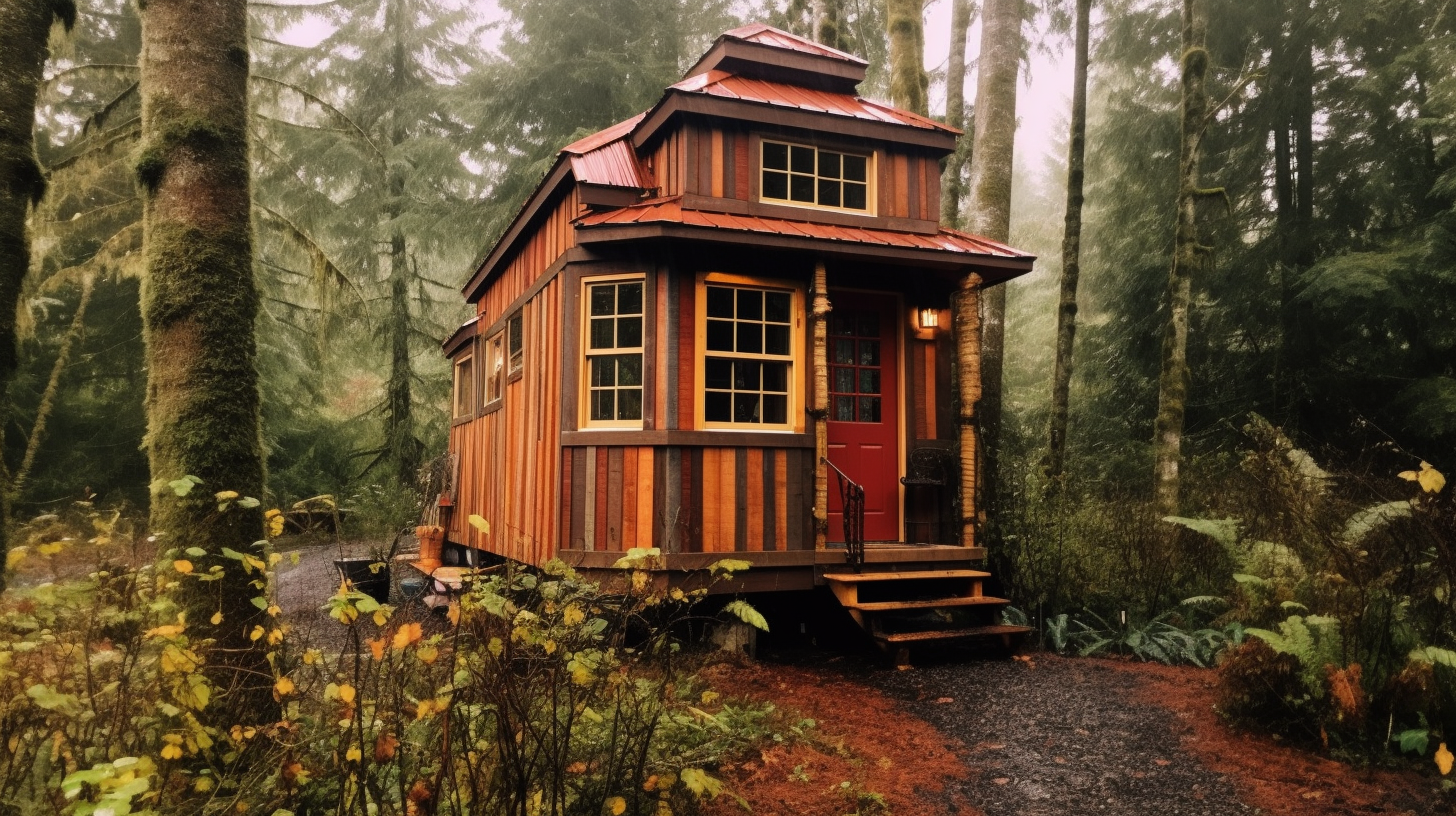To enhance your tiny house with contemporary design ideas, focus on multifunctional furniture that maximizes space and sleek, minimalist decor that feels open and airy. Incorporate sustainable materials like reclaimed wood and bamboo for an eco-friendly touch that also adds warmth. Use built-in storage and light finishes to create an uncluttered look, while large windows and skylights bring in natural light. Keep exploring to discover more tips for a stylish, functional small-space home.
Key Takeaways
- Incorporate multi-functional furniture like fold-out beds and hidden storage to maximize small space utility.
- Use sustainable materials such as reclaimed wood and bamboo for eco-friendly, stylish interiors.
- Design with clean lines, minimalist details, and built-in storage to enhance openness and organization.
- Prioritize natural light through large windows and skylights, connecting indoor and outdoor environments visually.
- Adopt a modern aesthetic with sleek, versatile pieces and light finishes to create a spacious, contemporary feel.

Are you looking to maximize space and style in a small footprint? If so, contemporary tiny house design offers innovative solutions that blend functionality with aesthetics. One of the key strategies is incorporating multi functional furniture that serves more than one purpose. Think of a sofa that transforms into a bed or a coffee table with hidden storage. These pieces help you make the most of limited space without sacrificing comfort or style. Choosing furniture that can serve multiple roles allows you to keep your living area open and clutter-free, making even the smallest spaces feel more expansive. Additionally, opting for pieces made from sustainable materials not only benefits the environment but also adds a modern, eco-conscious touch to your tiny home. Sustainable materials like reclaimed wood, bamboo, or recycled metal are durable, stylish, and lightweight, making them ideal for tiny house interiors. They also bring a natural warmth and texture that enhances the contemporary aesthetic.
In a tiny house, every inch counts, so designing with a focus on clean lines and minimalist details is essential. Using sleek, simple furniture pieces that have a lightweight appearance helps maintain an airy feel. You might consider built-in storage solutions that blend seamlessly into walls or under staircases, further optimizing the available space. Light-colored finishes and reflective surfaces, like glass or high-gloss paints, can also make the interior seem larger and more open. When selecting materials, prioritize those that are sustainable and environmentally friendly, reinforcing your commitment to eco-conscious living. Modern tiny house interiors often feature open floor plans that maximize natural light, so large windows or skylights are a smart addition. These elements not only brighten your space but also connect you with the outdoors, which is essential in small living environments. Incorporating color accuracy into your interior design choices can also help create a sense of depth and vibrancy, making the space feel more expansive and inviting.
Incorporating multi functional furniture made from sustainable materials creates a cohesive, stylish, and environmentally responsible living space. It allows you to keep the interior uncluttered while maintaining all the comforts of a larger home. The key lies in choosing versatile pieces that can adapt to your needs—whether for sleeping, dining, or relaxing—without overwhelming the limited square footage. By focusing on streamlined designs and eco-friendly materials, you craft a contemporary tiny home that feels spacious, inviting, and aligned with sustainable values. This approach ensures your small footprint is also a statement of modern, responsible living.
Frequently Asked Questions
What Are the Legal Requirements for Tiny House Zoning?
You need to check your local zoning laws to see if tiny houses are permitted on your property. Many areas require building permits, so you should apply for those before starting construction. Some zones have restrictions on size, placement, or utilities. It is crucial to contact your city or county zoning office to understand the specific regulations and guarantee your tiny house complies, avoiding potential legal issues later on.
How Can I Maximize Storage in a Small Space?
Think of your tiny house as a treasure chest—you want to hold as much as possible. To do this, use multi-functional furniture like beds with built-in drawers and fold-out tables. Incorporate vertical storage solutions such as wall-mounted shelves and hooks to free up floor space. These strategies help you maximize every inch, making your small space feel spacious and organized without sacrificing style or comfort.
What Eco-Friendly Materials Are Best for Tiny Homes?
You should consider eco-friendly materials like sustainable insulation, which reduces energy use and keeps your tiny home cozy. Recycled flooring options, such as reclaimed wood or repurposed tiles, add character while being environmentally responsible. Using these materials not only minimizes your carbon footprint but also creates a healthier living space. Incorporate sustainable insulation in walls and ceiling, and choose recycled flooring to make your tiny home both stylish and eco-conscious.
How Do Tiny Houses Perform in Extreme Weather?
Imagine your tiny house standing firm against a fierce storm, snow blanketing the roof. With proper insulation techniques, you keep the cold out and stay cozy inside. Efficient heating solutions, like a compact wood stove or electric heater, ensure warmth during extreme weather. Well-designed tiny homes can handle harsh conditions when you focus on quality insulation and reliable heating, making your small space a safe haven no matter the weather outside.
What Are Cost-Effective Options for Tiny House Construction?
You can keep construction costs low by choosing modular construction, which allows you to assemble your tiny house quickly and efficiently. Using recycled materials, like reclaimed wood or repurposed fixtures, also saves money and benefits the environment. These options reduce labor and material expenses, making your tiny house more affordable overall. Plus, they offer flexible design choices, helping you create a functional, stylish space without breaking the bank.
Conclusion
With innovative design ideas, your tiny house can feel spacious and stylish. Did you know that over 80% of tiny homeowners report increased happiness and reduced stress? By maximizing every inch and choosing clever storage solutions, you create a cozy retreat that feels bigger than it is. Embrace these ideas, and your small space will become a personalized haven, proving that less truly can be more. Start designing today and enjoy the freedom of tiny living!









